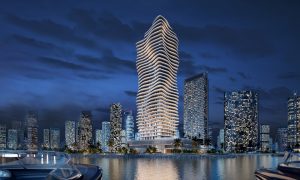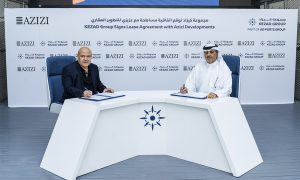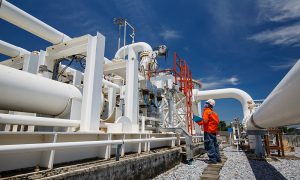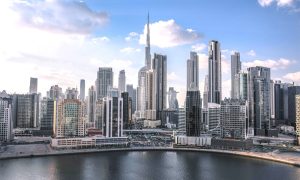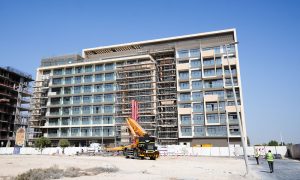Feature: A healthier outlook
Drees & Sommer talks about the revitalisation of the ProVita International Medical Centre in Abu Dhabi

Drees & Sommer (D&S) was appointed as the project consultant in charge of the revitalisation of the ProVita International Medical Centre in Abu Dhabi. The firm was involved from the initial stage of the project until it was handed over.
The term ‘revitalisation’ in the construction industry means to bring new life into a building, neighbourhood or district by improving its current state to a chosen target. It is often confused with ‘refurbishment’, but revitalisation focuses on meeting user demands and improving overall functionality and efficiency.
The ‘useful life’ or longevity of a building depends on a number of factors. The design of a building can have a major impact on its lifespan, while the materials used to construct a building are vital. With the latter, properties change over time as they begin to degrade, so it is essential to ensure that high-quality materials are used during the revitalisation process to increase the usage life of the building.
In Germany, the average lifespan of a building is 50 years, though this varies depending on the usage of the building and its core purpose. According to industry research, buildings in the UAE have an average usage lifespan of 20 years, particularly when it comes to buildings constructed during the economic downturn, as cost cutting was tolerated in order for developers to stay afloat. Due to this, a significant number of buildings have to undergo revitaliation due to the use of low-quality materials.
With the ProVita International Medical Centre, the $5.4m revitalisation project expanded the facility and increased its overall functionality, enabling it to better serve its core purpose as a medical facility for the long-term rehabilitation of patients. The client’s main objective was to increase the number of patient beds, while making the centre more accessible to patients with disabilities that prevent stair use.
D&S was responsible for project set-up, design management, procurement management, value engineering and overall project management. The firm’s project team developed several design workshops to meet client demands and ensured the revitalisation project was completed in time for handover. A structural extension was built to connect two freestanding wings of the medical centre and an elevator was incorporated into the design to increase building functionality and accessibility for patients and visitors on all floors.
The revitalisation of this particular project was unique, according to D&S, as the consultancy had to convert a facility originally developed for residential purposes into a fully functional, patient-friendly medical centre. In addition, D&S gave the medical centre a new look and feel by upgrading its exterior design, giving the building a brand-new façade and landscape.
During the design and construction phase, existing structures and building materials had to be thoroughly evaluated to ensure proper design implementation and qualitative construction delivery.
Project Challenges
As with most projects, challenges are part of the process and have to be properly addressed or they can jeopardise the success of the project. These challenges are amplified when an existing facility has to continue to function while construction work is being carried out.
One of the key requirements of the project was that the medical centre was to continue functioning throughout the revitalisation process. The D&S team addressed this by relocating patients between the various wards of the facilty as the construction process progressed. To support this, the team developed an effective strategy to ensure that every patient was relocated and taken care of while working, to minimise any disruptions to them.
As the building was originally built over 10 years ago, structural reinforcements were implemented to ensure building longevity, while high-quality building materials were used to construct the extension between the two wings of the medical centre. The extension included the installation of an elevator to create ease and increase accessibility for patients with disabilities.
Lean construction management (LCM) was used to coordinate the execution of the entire project, allowing the project team to significantly increase project efficiency, detect and avoid risks, and achieve all scheduled milestones, cost targets and quality goals. LCM also helped improve profitability, reliable implementation, significant return on investment, smooth and coordinated project execution and significant energy savings, according to the consultancy. Project planning also ensured that D&S was able to meet its objective to increase the number of independent patient rooms from 22 to 42, improving the overall capacity of the medical facility.
The consultancy’s approach to value engineering included complete cost evaluation of the proposed materials required to undertake the project, and providing the client with accurate feedback on how to be cost-effective without compromising on quality. New building materials were proposed to the client and the project team was able to help achieve significant savings throughout every phase of the revitalisation project.
The revitalisation of the medical centre increased the facility’s overall capacity, thus extending its lifespan, making it more adaptable to its users’ needs and enhancing its functionality to better serve its core purpose.
Successful revitalisation projects balance user demands and economic frame conditions. Here, the project team was able to replenish the medical centre’s usage supply, recreating the space to meet the needs of users within the parameters of an existing structure. Focal points were enhanced, adding usable space and constructing an extension between two separate wings of the facility, making the space more accessible to those with disabilities requiring rehabilitative care.

